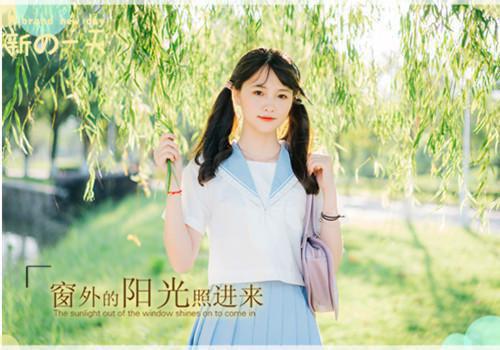Our country is an old country with about five thousand years history so it has been attracting so many foreign tourists or students to come here to explore our history. Unlike other countries, China has experienced many dynasties and its culture has spread home and abroad . In terms of character, it has developed so much that we can hardly grasp every one of them though we are Chinese, let alone foreigners. So this has made so many foreigners much interested in it . Chinese Kun-fu is also impressive in the world .
介绍中国文化的英语作文
Traditional Chinese culture is beginning to capture the attention of the world. This is true even as popular culture that has traditionally been considered Western begins to spread throughout China. Kung Fu, especially, has had a great impact on the millions of people who first learned about China through it. From that, they may come to China and learn about other aspects of this culture, such as traditional operas like the Beijing and Sichuan ones. Asian nations have long known about the greatness of ancient Chinese culture. Their own cultures are a mix of native ones and those Chinese characteristics. Korea and Japan long ago adopted ideas such as Confucianism is something that continues today even as it is challenged by Pop Culture. This strength comes from the ideas given in the Four Books of Confucianism (The Great Learning, The Doctrine of the Mean, The Analects of Confucius, and The Book of Mencius). These books built upon the ideas of an even more ancient period codified in the Five Classics. From them, the West learns such things as Fengshui and other concepts that are uniquely Chinese. China has taken steps to further this spread of its culture by establishing Chinese Cultural Centers in such places as the United States and Europe.中国传统文化正在吸引全世界的注意,尽管在传统意义上被看成是西方文化的流行文化开始在中国广泛传播。
尤其是中国功夫,对于那些通过功夫初次了解中国的成千上万的人来讲,有着非常大的影响。
由于功夫,他们可能来到中国,学习了解中国文化的其他方面,比如京剧和川剧这样的传统戏剧。
亚洲国家很早以前就知道古代中国文化的博大。
他们自己的文化混合了本民族的文化和中国文化的特色。
韩国和日本很早就把儒教等观念引进了他们的社会当中。
甚至在被流行文化冲击的今天,儒教的影响也一直在延续。
这种力量来自“四书”(《大学》、《中庸》、《论语》和《孟子》)中的思想。
这些书是依照“五经”之中所体现的更为早期的思想而著成的。
西方人从中了解到了诸如风水等中国所特有的文化概念。
中国已经通过向其他国家派遣文化使者并在美国、欧洲等地建立中国文化中心来进一步推广中国文化。

关于中国传统文化的英语作文
这些东西都可以再网上查到!关于长城的传说 In the north of China, there lies a 6,700-kilometer-long (4,161-mile-long) ancient wall. Now well-known as the Great Wall of China, it starts at the Jiayuguan Pass of Gansu Province in the west and ends at the Shanhaiguan Pass of Hebei Province in the east. As one of the Eight Wonders in the world, the Great Wall of China has become the symbol of the Chinese nation and its culture. Lots of beautiful legends and stories about the Great Wall took place following along the construction, and since that time these stories have spread around the country. Those that happened during construction are abundant, such as Meng Jiangnu's story and the legend of the Jiayuguan Pass. Meng Jiangnu's story is the most famous and widely spread of all the legends about the Great Wall. The story happened during the Qin Dynasty (221BC-206BC). It tells of how Meng Jiangnu's bitter weeping made a section of the Great Wall collapse. Meng Jiangnu's husband Fan Qiliang was caught by federal officials and sent to build the Great Wall. Meng Jiangnu heard nothing from him after his departure, so she set out to look for him. Unfortunately, by the time she reached the great wall, she discovered that her husband had already died. Hearing the bad news, she cried her heart out. Her howl caused the collapse of a part of the Great Wall. This story indicates that the Great Wall is the production of tens of thousands of Chinese commoners. Another legend about the Jiayuguan Pass tells of a workman named Yi Kaizhan in the Ming Dynasty (1368BC-1644BC) who was proficient in arithmetic. He calculated that it would need 99,999 bricks to build the Jiayuguan Pass. The supervisor did not believe him and said if they miscalculated by even one brick, then all the workmen would be punished to do hard work for three years. After the completion of the project, one brick was left behind the Xiwong city gate. The supervisor was happy at the sight of the brick and ready to punish them. However Yi Kaizhan said with deliberation that the brick was put there by a supernatural being to fix the wall. A tiny move would cause the collapse of the wall. Therefore the brick was kept there and never moved. It can still be found there today on the tower of the Jiayuguan Pass. In addition to the above-mentioned stories about the construction of the Great Wall, there are also plenty of stories about current scenic spots. A famous one is the legend of the Beacon Tower. This story happened during the Western Zhou Dynasty (11th century BC-711 BC). King You had a queen named Bao Si, who was very pretty. King You liked her very much, however Bao Si never smiled. An official gave a suggestion that setting the beacon tower on fire would frighten the King's subjects, and might make the queen smile. King You liked the idea. The subjects were fooled and Bao Si smiled at the sight of the chaos. Later enemies invaded Western Zhou, King You set the beacon tower on fire to ask for help. No subjects came to help because they had been fooled once before. Thus, King Zhou was killed by the enemy and Western Zhou came to an end. Beautiful stories and legends about the Great Wall help to keep alive Chinese history and culture. In each dynasty after the building of the Great Wall, many more stories were created and spread. 历史 No one can tell precisely when the building of the Great Wall was started but it is popularly believed that it originated as a military fortification against intrusion by tribes on the borders during the earlier Zhou Dynasty. Late in the Spring and Autumn Period (770 BC - 476 BC), the ducal states extended the defence work and built "great" structures to prevent the attacks from other states. It was not until the Qin Dynasty that the separate walls, constructed by the states of Qin, Yan and Zhao kingdoms, were connected to form a defensive system on the northern border of the country by Emperor Qin Shi Huang (also called Qin Shi Huangdi by westerners or the First Emperor). After the emperor unified the country in 214 BC, he ordered the construction of the wall. It took about ten years to finish and the wall stretched from Linzhao (in the eastern part of today's Gansu Province) in the west to Liaodong (in today's Jilin Province) in the east. The wall not only served as a defence in the north but also symbolized the power of the emperor. From the Qin Dynasty onwards, Xiongnu, an ancient tribe that lived in North China, frequently harassed the northern border of the country. During the Han Dynasty, Emperor Wu (Han Wu Di), sent three expeditions to fight against the ...
关于中国传统文化的英语作文
展开全部The information revolution, the development of mass media and the achievements in science and technology have doubtlessly ushered us in a rapidly progressing society, where we may have no time to talk about our traditional culture. In the city, no one can escape from the fast pace.We eat the popularized fast food and enjoy the popularized "fast food" culture. Since we get so used to such fast things that many traditional things have been neglected, some people believe that the traditional culture will gradually be lost, but I think it will never be lost.Although entertainments are in abundance nowadays, traditional cultures still continue to dominate.We still regard going to a concert as a luxury. Many classic books touch a string from generation to generation in spite of time and space.And we are still moved by the inspirational spirits of our great ancestors.Traditional festivals remind us of our disposition to the traditional culture. Our relief in traditional culture gets ready to revive at any time.To some traditional cultures that are on decline, we have taken active measures to conserve them. Experts have come up with proper advice on protecting such cultures. Many volunteers have dedicated themselves to studying them. First and foremost,more and more people have discerned the importance of the traditional culture. Therefore, we are sure that our efforts will lead to a brilliant future.If a culture wants to gain an eternal life, it should change itself to cater to the people in its age. So does our traditional culture. Traditional cultures adhering to modern means appear rigorous. For example, we make CDs for classic music so that it can not only meet modern needs but also spread further and more successfully in the modern world. The appearance of traditional culture changes, but the essence will never change and will be well accepted.There is no need to worry about whether our traditional culture will be lost. It is an important heritage of the whole human race. No culture, no mankind. We cherish the traditional culture as we cherish our blood in our body. The traditional culture lies in life, forever continuing.
关于中国文化的英语作文
展开全部 The Spring Festival Far and away the most important holiday in China is Spring Festival, also known as the Chinese New Year. To the Chinese people it is as important as Christmas to people in the West. The dates for this annual celebration are determined by the lunar calendar rather than the Gregorian calendar, so the timing of the holiday varies from late January to early February. To the ordinary Chinese, the festival actually begins on the eve of the lunar New Year's Day and ends on the fifth day of the first month of the lunar calendar. But the 15th of the first month, which normally is called the Lantern Festival, means the official end of the Spring Festival in many parts of the country. 2 Spring Festival is the most importantand popular festival in China.Before Spring Festival ,the people usually clean and decorate their houses.And they go to the Flower Fairs to buy some flowers.During Spring Festival ,the adults usually give lucky money to children.People often get together and have a big meal.Some people eat dumpling for dinner.春节的作文
关于中国文化的英语文章?
这是一篇关于造纸的文章:A long time ago, the text is engraved on the bones, or written on bamboo, silk,These materials have very heavy, some are very expensive, and cause a lot of inconvenience to the people.In the period of the Western Han Dynasty two thousand years ago, some people began to use some of the more expensive plantThe fabric of paper, the paper looks very rough, writing is still very convenient. ToThe Eastern Han Dynasty, there was a eunuch named Cai Lun decided to look for a paper practical for peopleMethod.Cai Lun often went to the river, to observe the women wash silk and silk "floating floc" process.He found the rest of the silk after breaking away out of silk,Will form a thin layer on the tableThings。
Some people put it to dry in the sun, to paste the windows, package, or is used to write.He to the paper mill,To consult the paper craftsmen,Gradually understand and master the buildThe basic process of paper.In order to create an economic and practical paper,Cai Lun used the bark,Bark,Rags, scrap fishing nets and other common materials, broken them, made of paper pulp.Every month Cai Lun test, test, get all the dirty, the people aroundThey regard him as an eccentric, not willing to approach him. But he didn't care about those strange eyes, according toA new method of his paper in the old.He used the "method of floating floc", with the mat for the pulp, the pulp outWill form a thin layer of the mat, dried it was paper.Cai Lun succeeded. He made the low price, easy to carry and the writing of the paper, theA great invention was listed as one of the four great inventions of ancient china.
寻一篇关于“文化交流”的英语作文范文。
The key to effective cross-cultural communication is knowledge. First, it is essential that people understand the potential problems of cross-cultural communication, and make a conscious effort to overcome these problems. Second, it is important to assume that one's efforts will not always be successful, and adjust one's behavior appropriately.For example, one should always assume that there is a significant possibility that cultural differences are causing communication problems, and be willing to be patient and forgiving, rather than hostile and aggressive, if problems develop. One should respond slowly and carefully in cross-cultural exchanges, not jumping to the conclusion that you know what is being thought and said. William Ury's suggestion for heated conflicts is to stop, listen, and think, or as he puts it "go to the balcony" when the situation gets tense. By this he means withdraw from the situation, step back, and reflect on what is going on before you act. This helps in cross cultural communication as well. When things seem to be going badly, stop or slow down and think. What could be going on here? Is it possible I misinterpreted what they said, or they misinterpreted me? Often misinterpretation is the source of the problem.Active listening can sometimes be used to check this out–by repeating what one thinks he or she heard, one can confirm that one understands the communication accurately. If words are used differently between languages or cultural groups, however, even active listening can overlook misunderstandings. Often intermediaries who are familiar with both cultures can be helpful in cross-cultural communication situations. They can translate both the substance and the manner of what is said. For instance, they can tone down strong statements that would be considered appropriate in one culture but not in another, before they are given to people from a culture that does not talk together in such a strong way. They can also adjust the timing of what is said and done. Some cultures move quickly to the point; others talk about other things long enough to establish rapport or a relationship with the other person. If discussion on the primary topic begins too soon, the group that needs a "warm up" first will feel uncomfortable. A mediator or intermediary who understands this can explain the problem, and make appropriate procedural adjustments.Yet sometimes intermediaries can make communication even more difficult. If a mediator is the same culture or nationality as one of the disputants, but not the other, this gives the appearance of bias, even when none exists. Even when bias is not intended, it is common for mediators to be more supportive or more understanding of the person who is of his or her own culture, simply because they understand them better. Yet when the mediator is of a third cultural group, the potential for cross-cultural misunderstandings increases further. In this case engaging in extra discussions about the process and the manner of carrying out the discussions is appropriate, as is extra time for confirming and re-confirming understandings at every step in the dialogue or negotiating process.
参考一篇有关传统文化为内容英语作文
关于长城的传说 In the north of China, there lies a 6,700-kilometer-long (4,161-mile-long) ancient wall. Now well-known as the Great Wall of China, it starts at the Jiayuguan Pass of Gansu Province in the west and ends at the Shanhaiguan Pass of Hebei Province in the east. As one of the Eight Wonders in the world, the Great Wall of China has become the symbol of the Chinese nation and its culture. Lots of beautiful legends and stories about the Great Wall took place following along the construction, and since that time these stories have spread around the country. Those that happened during construction are abundant, such as Meng Jiangnu's story and the legend of the Jiayuguan Pass. Meng Jiangnu's story is the most famous and widely spread of all the legends about the Great Wall. The story happened during the Qin Dynasty (221BC-206BC). It tells of how Meng Jiangnu's bitter weeping made a section of the Great Wall collapse. Meng Jiangnu's husband Fan Qiliang was caught by federal officials and sent to build the Great Wall. Meng Jiangnu heard nothing from him after his departure, so she set out to look for him. Unfortunately, by the time she reached the great wall, she discovered that her husband had already died. Hearing the bad news, she cried her heart out. Her howl caused the collapse of a part of the Great Wall. This story indicates that the Great Wall is the production of tens of thousands of Chinese commoners. Another legend about the Jiayuguan Pass tells of a workman named Yi Kaizhan in the Ming Dynasty (1368BC-1644BC) who was proficient in arithmetic. He calculated that it would need 99,999 bricks to build the Jiayuguan Pass. The supervisor did not believe him and said if they miscalculated by even one brick, then all the workmen would be punished to do hard wo
以中国文化为题写一篇英语作文,谢谢大家了
In recent years,there are more and more Confucius Institutes being built all around the world,which shows that our Chinese culture becomemore popular than ever. As oneof the four ancient civilizations, China has long history and creates manysplendid cultures.全文可以参考英语作文网 http://www.adreep.cn/dxyy/50290.html看看。
开心
一篇包括名胜古迹名称,地点,历史和文化的英语作文
As we all know,the Great Wall is a great building,I am proud of the Great Wall.First,the Great Wall two thousand years of history; It is located in northern China.East from Shanhaiguan,west to Jiayuguan,total length of 8851.8 km.Second,the Great Wall is China's ancient people created one of the great miracles on behalf of China's long history.Third,in the past,the Great Wall was built to withstand enemy attack on the; Today,the Great Wall has become a popular tourist attraction,which every year attracts many tourists from around the world.
有关文化是连贯的一篇英语作文
展开全部 In recent years, there are more and more Confucius Institutes being built all around the world, which shows that our Chinese culture become much more popular than ever. As one of the four ancient civilizations, China has long history and creates many splendid cultures. The ancient culture once had great influence on the world, such as Japan, South Korea and other Asian and European countries.近年,世界各地建立了越来越多的孔子学院,这表明我们的中国文化比过去更受欢迎了。
作为四大文明古国之一,中国有着悠久的历史并且创造了许多辉煌的文化。
古代文化曾经对世界产生了巨大影响,比如日本,韩国以及其他欧亚国家。
From the respect of school, Confucianism, Mohism, Taoism, and Legalism are the main schools created in ancient China, and they also have great influence on the Modern China and the world, especially the Confucianism. They deeply root in traditional Chinese culture and people's daily lives.就学校方面来看,儒家、墨家、道家以及法家是中国古代开创的主要流派。
它们也对现代中国和世界产生了巨大影响,尤其是儒家思想。
它们深深的根植于传统的中国文化和人们的日常生活中。
Specially, kung fu, traditional Chinese painting, poem, opera, cooking, clothing, architecture and many other kinds of cultural forms make up the splendid Chinese culture. The kinds listed above are the typical ones which connect to each other at the same time. For example, painting, clothing and architecture has many things in common. And each kind of cultural form contains numerous intentions.特别地,功夫、传统的中国绘画、诗歌、戏剧、烹饪、服饰、建筑以及很多其他种类的文化形式组成了辉煌的中国文化。
以上列举的种类都是典型的,同时也是相互联系的。
例如,绘画、服饰和建筑有很多的共同之处。
每一种文化形式都包涵了大量的意向。
In short, Chinese culture are the accumulation of Chinese history, which makes Chinese culture colorful and prosperous. If one wants to know or study Chinese culture deeply, he or she must spend much time in it, otherwise he or she can only get the tip of an iceberg.简而言之,中国文化是中国历史的累积,历史使得中国文化丰富多彩和繁荣。
如果一个人想要深入了解或者学习中国文化,他必须花大量的时间在上面,否则只能得到冰山一角。
转载请注明出处作文大全网 » 关于写中国文化的英语作文100词









 西班牙吹牛士
西班牙吹牛士

